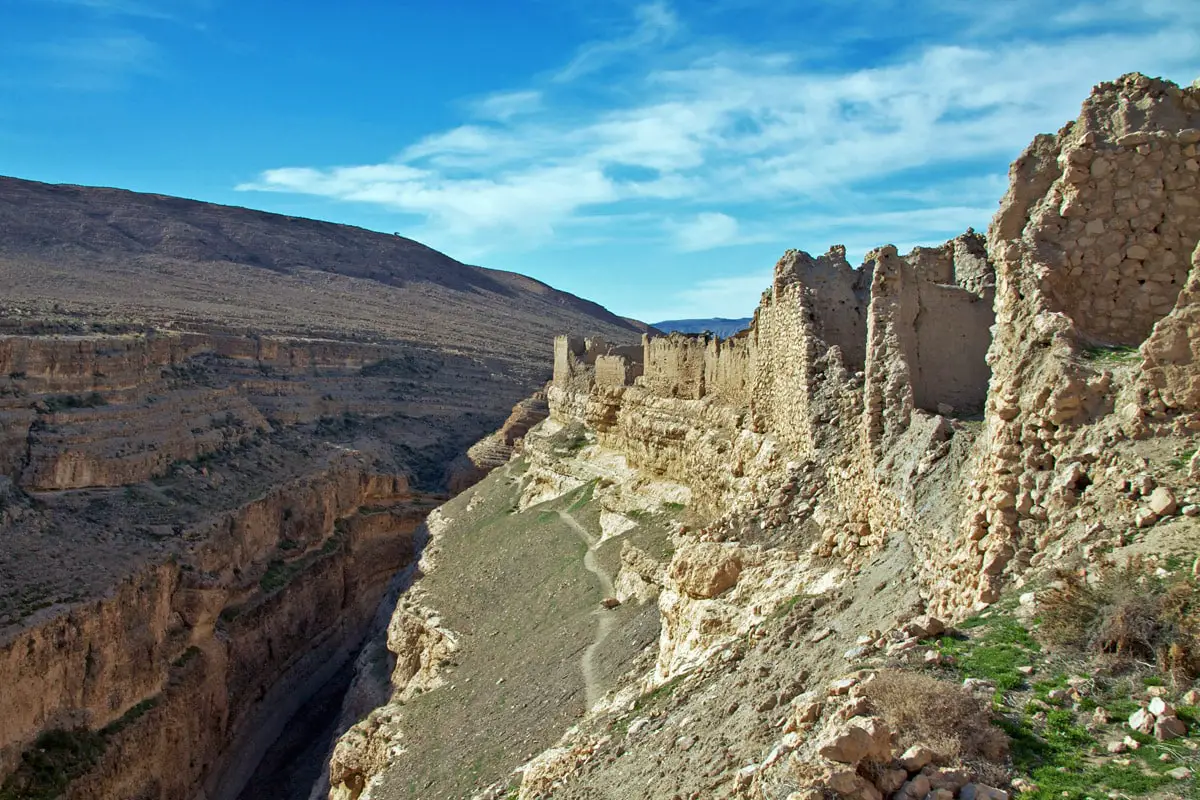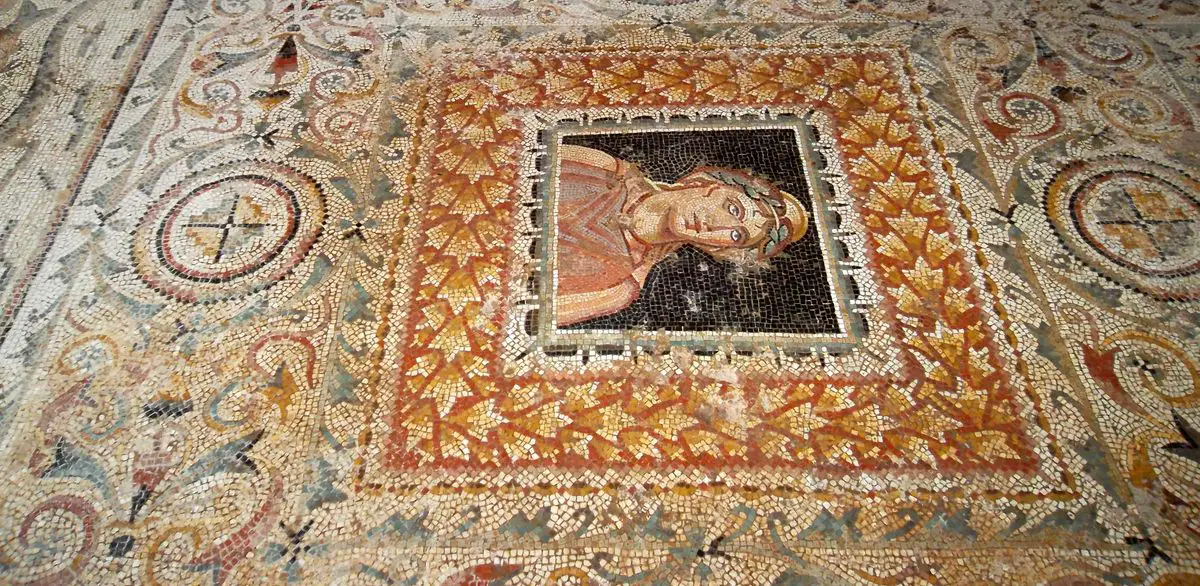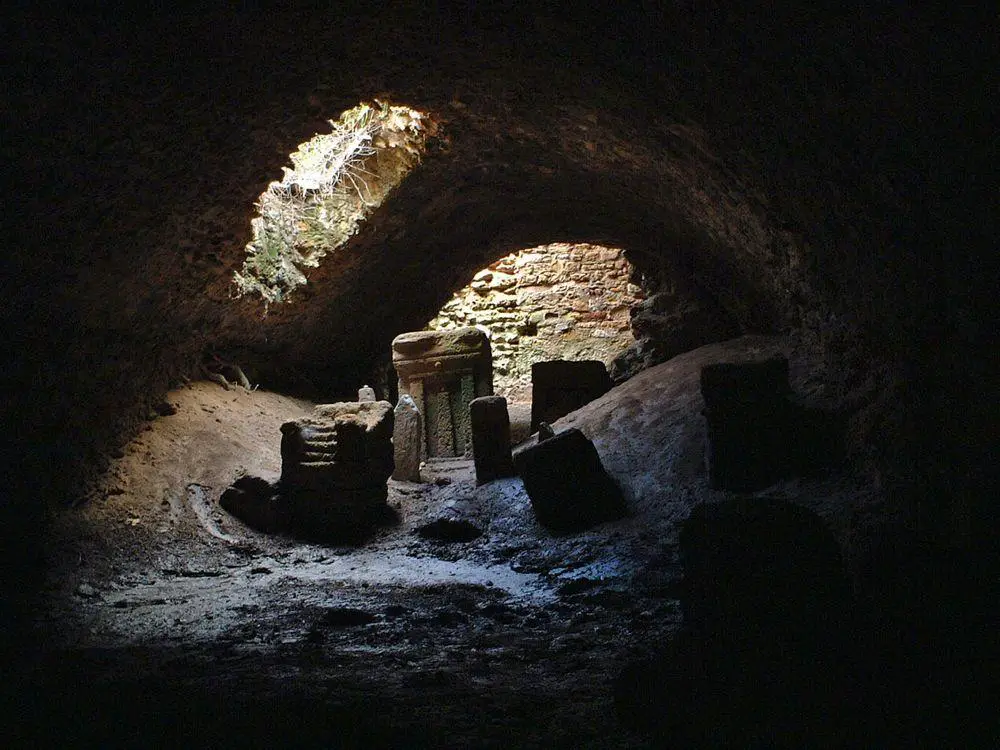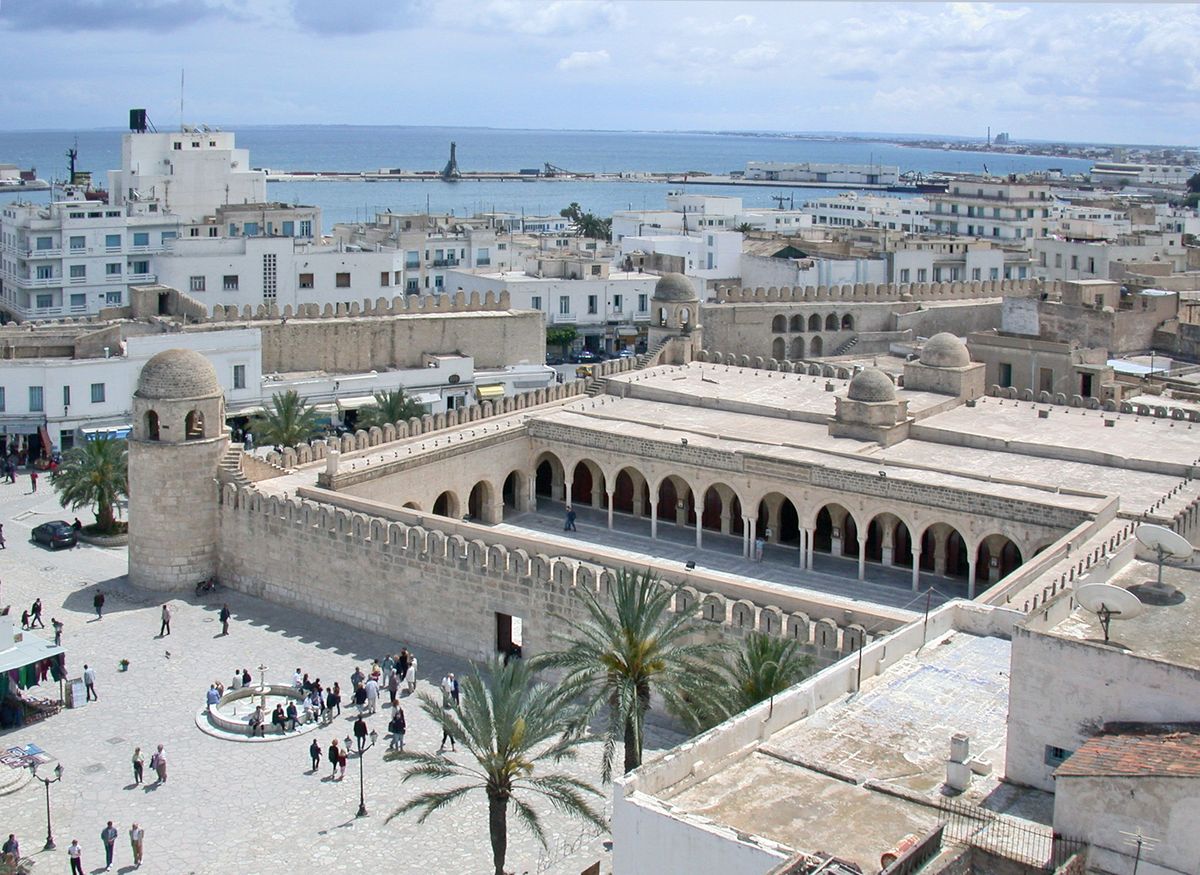Wondermondo 🢖 World 🢖 Wonders of Africa 🢖 Wonders of Tunisia
Territory
Wonders of Tunisia
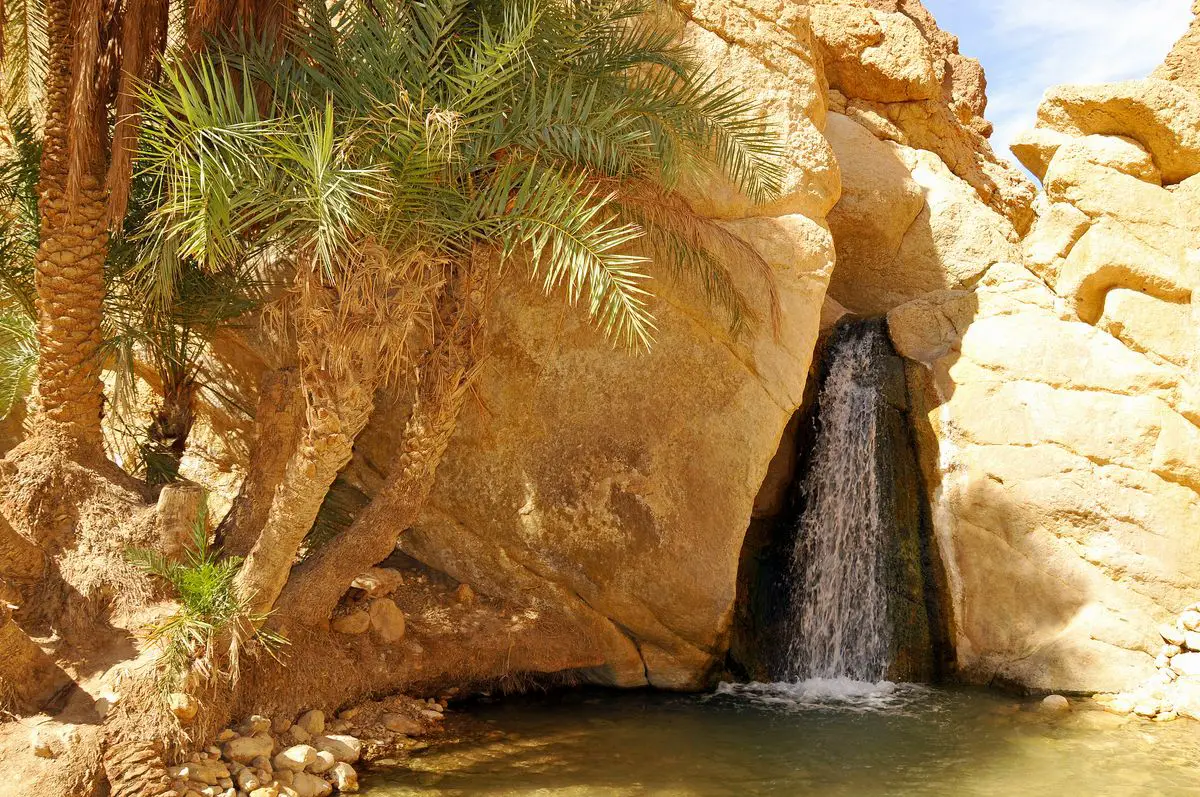
 Highlights
Highlights
Although Tunisia is smaller than its neighboring countries, it has a great history, the country is very rich with archaeological landmarks. The most amazing wonders of Tunisia are:
- Ruins of Punic, Roman and Byzantine cities. The first cities in present-day Tunisia started to develop almost 3000 years ago and one of them – Ancient Carthage was among the largest metropolises in the ancient world.
- Medieval cities and towns. Tunisia has some of the best-preserved and interesting medieval cities in the Arab world, such as the old cities (medinas) of Tunis, Sfax, and Sousse.
Map with the described wonders
If you see this after your page is loaded completely, leafletJS files are missing.
 Top 25 wonders of Tunisia
Top 25 wonders of Tunisia
Geological wonders
Mine Cave
Kairouan
The longest known cave in Tunisia, 4,100 m long. Contains traces of human settlement and beautiful cave formations, including gours.
Mides Gorge and oasis
Tozeur
This mountain oasis is located in a very impressive gorge. The gorge is some 3 km long, walls are approximately 50 – 60 m tall.
Archaeological wonders
Ancient Carthage
Tunis
Once a very important, legendary city, established as a Phoenician colony in the 9th century BC. Carthage as the capital of Punic culture was the main rival of emerging Rome and finally was destroyed by the Romans in 146 BC. Then it was reestablished by Romans and destroyed by Muslims in 698 AD.
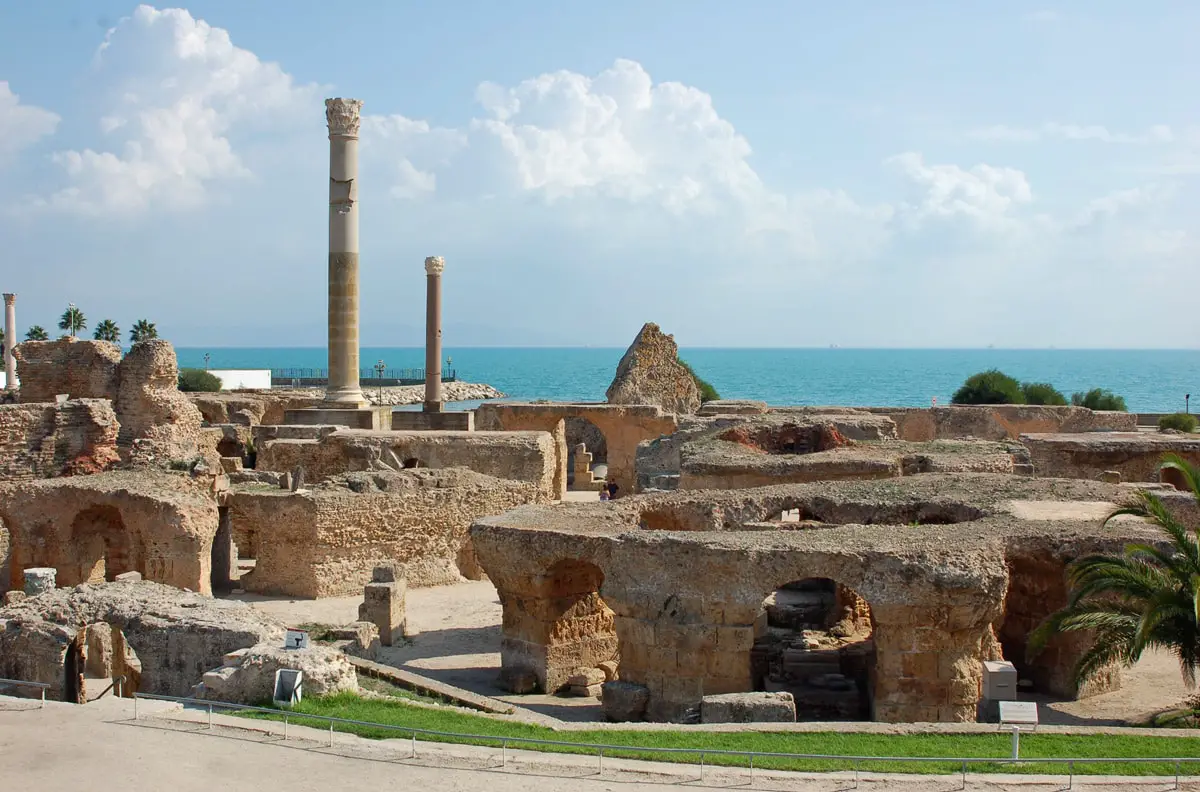
Dougga (Thugga)
Béja
Extensive ruins of a magnificent Punic, Roman, and Byzantine city, one of the best preserved Roman cities. Contains ruins of many buildings, notably, a mausoleum, capitol, theatre, temples of Saturn, and Juno Caelestis.
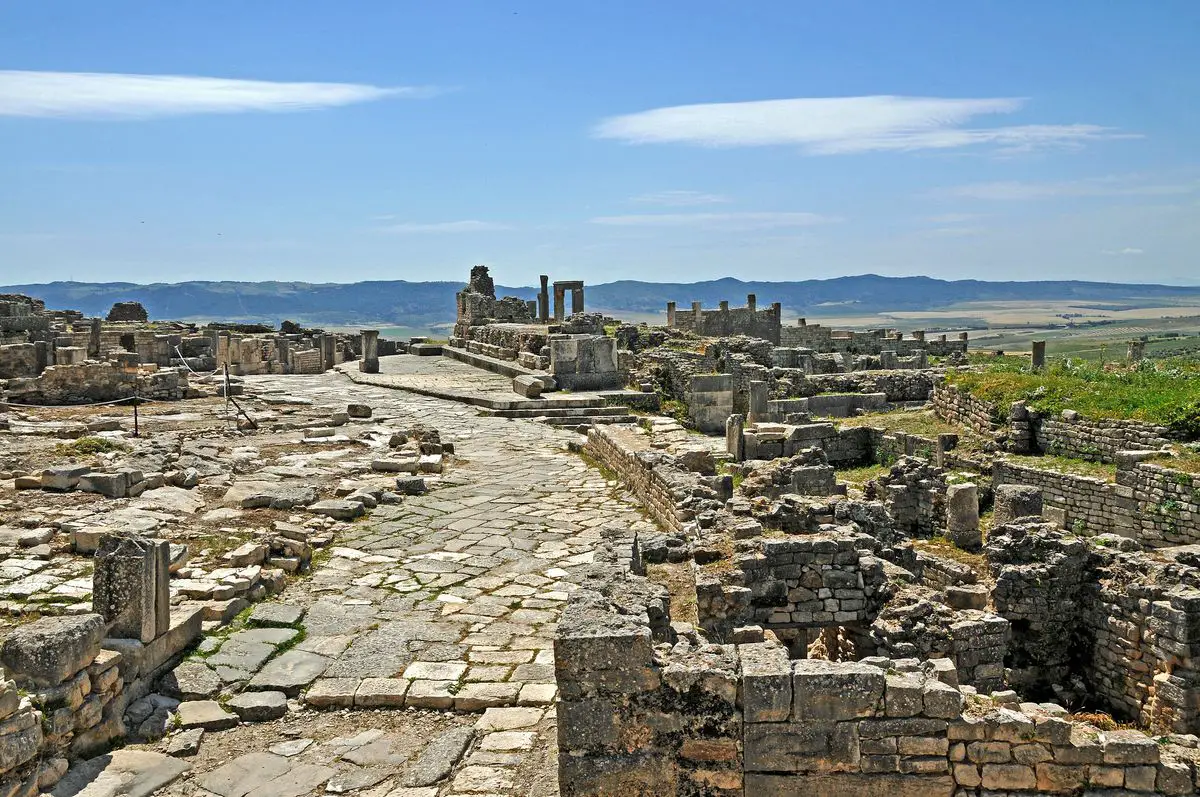
El Jem amphitheater
Mahdia
The third largest Roman amphitheater after Colosseum and Capua amphitheater. It is comparatively well preserved, constructed around 238 AD, and has a capacity of 35,000 seats. The amphitheater was used mainly for gladiator shows and chariot races.
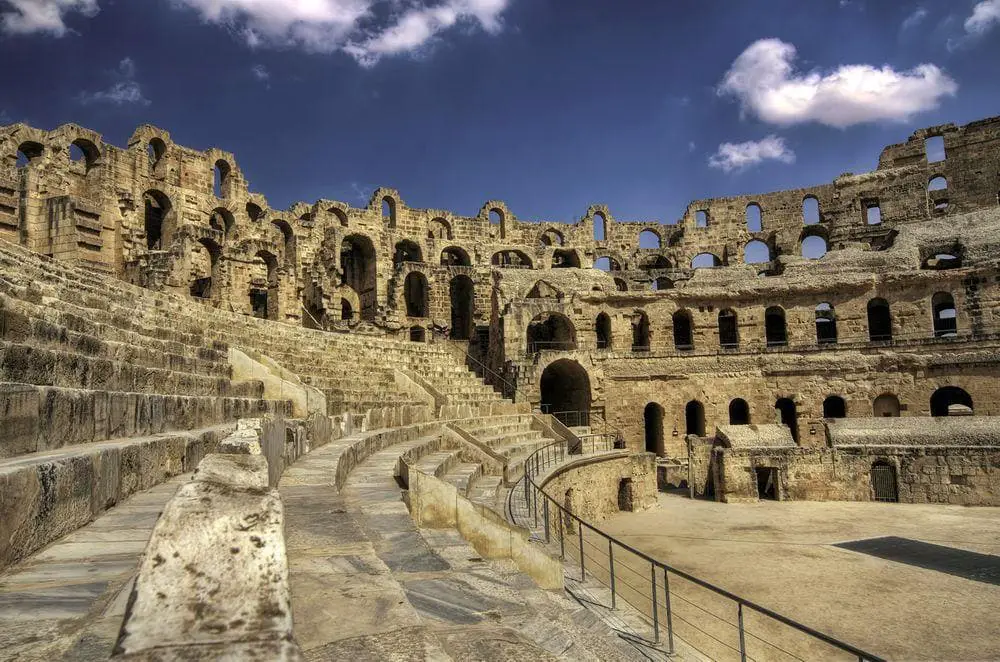
Bulla Regia
Jendouba
Ruins of a city that was founded by Punians around the 4th century BC and later extended by Romans. Magnificent mosaic floors have been preserved. Many of the buildings were partly underground – this was an adaptation to the African heat.
Makthar (Maktara)
Siliana
An ancient settlement, inhabited since the eighth millennium BC. The city was established here in the 3rd – 2nd century BC. Later it was an important Numidian, Punic, and Roman city, and an important center of Christianity. Declined in the 5th century AD.
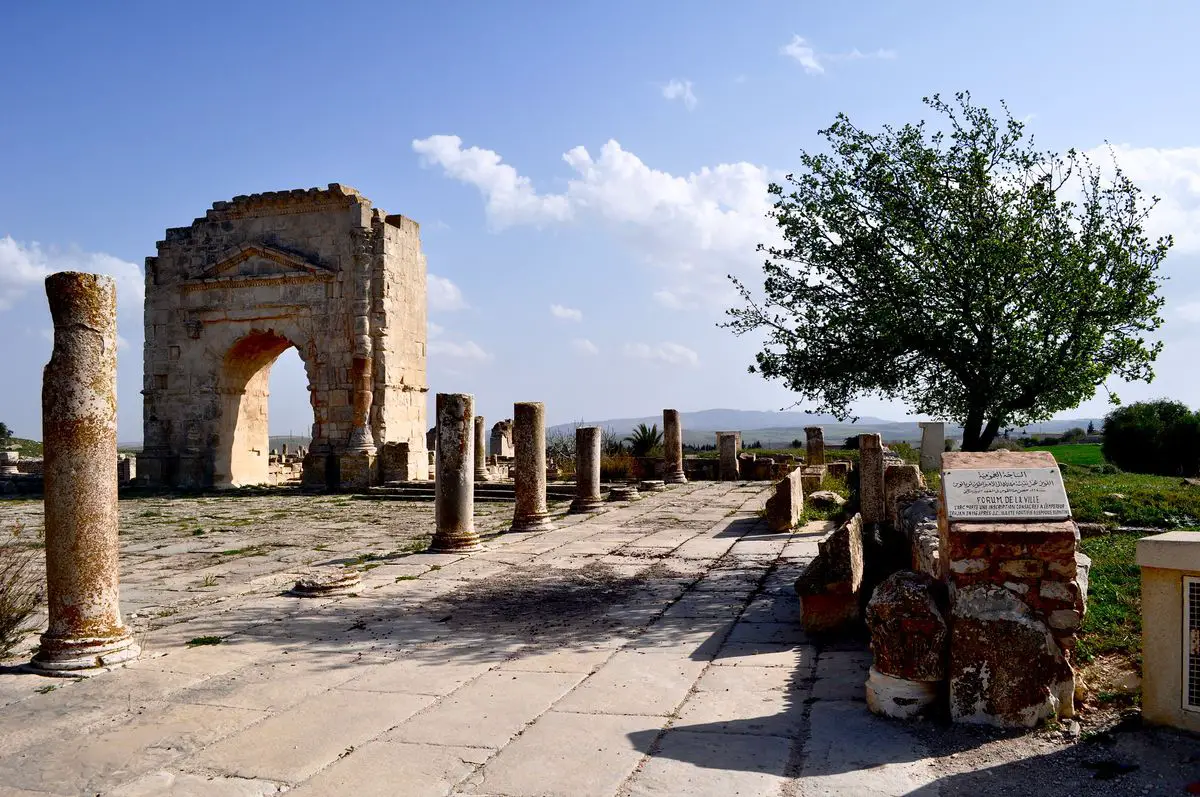
Sufetula
Kasserine
Ruins of a Roman city with some of the best-preserved ruins of forum temples.
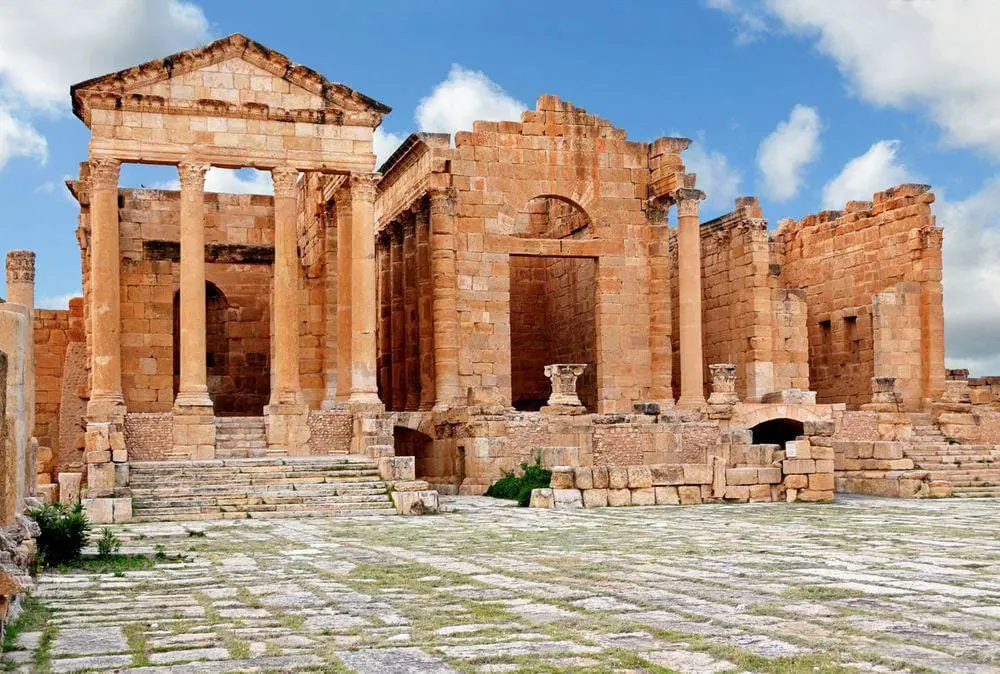
Temple of Hathor Miskar
Siliana
An ancient Punic temple that was built in the 1st century BC, and reconstructed in the 2nd century AD. This shows that the Punic cult continued here long after the arrival of the Romans. Temple contained the longest known Punic inscription – 47 lines on 10 columns.
Oudna
Ben Arous
Ruins of Punic and Roman citiy. Here have been found fine mosaics, a large amphitheater, baths, a capitol, an aqueduct, as well as an enormous temple of Jupiter.
Dougga Numidian Mausoleum
Béja
One of the few remaining Numidian royal mausoleums. This structure is 21 m tall, built in the 2nd century BC.
House of the Hunt in Bulla Regia (Maison de la Chasse)
Jendouba
Large city house of wealthy Ancient Roman citizens with fine mosaic floors. The planning of this house is similar to the planning of a basilica and it is possible that elements of such houses were used for the concept of Christian churches.
Oudna amphitheater
Ben Arous
110 by 90 m large amphitheater with a capacity of 15,000 spectators.
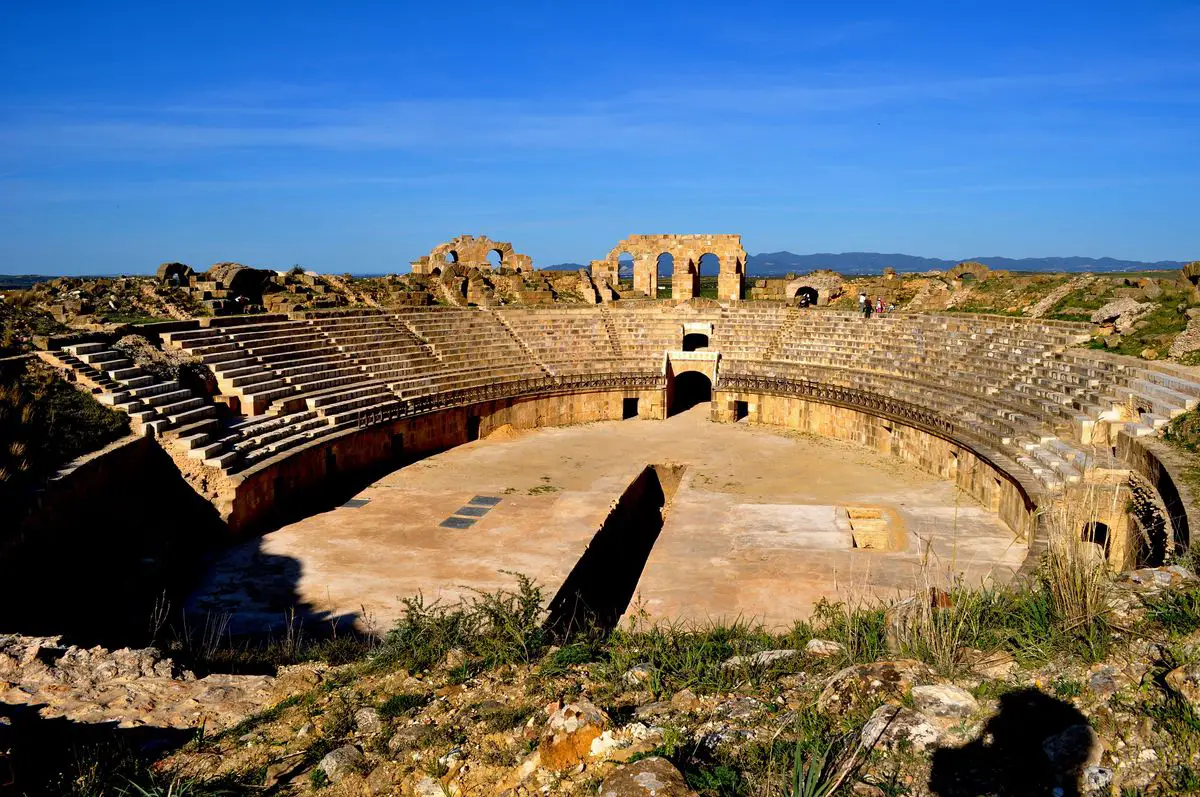
Tophet of Salammbó
Tunis
Punic sanctuary and necropolis of children that was used in 730 BC – 146 AD. It is considered that this was the site where children were sacrificed by Carthaginians. Now it is located under a later, Roman-built vault.
Kef Negcha Rock (Kef Ennagcha)
Jendouba
A large rock that rises above El Feijaa forest. Prehistoric sacred site with signs of rock art. On the top of the rock were built Numidian fortresses and even fortifications of Algerian freedom fighters from 1960 – 1962.
Architecture wonders
Matmâta
Gabès
Unique troglodyte village with numerous underground rock-cut houses in intense use up to this day. Matmâta was developed as a hideaway from the scorching heat of the Sahara desert and it is possible that it has existed since Roman times.
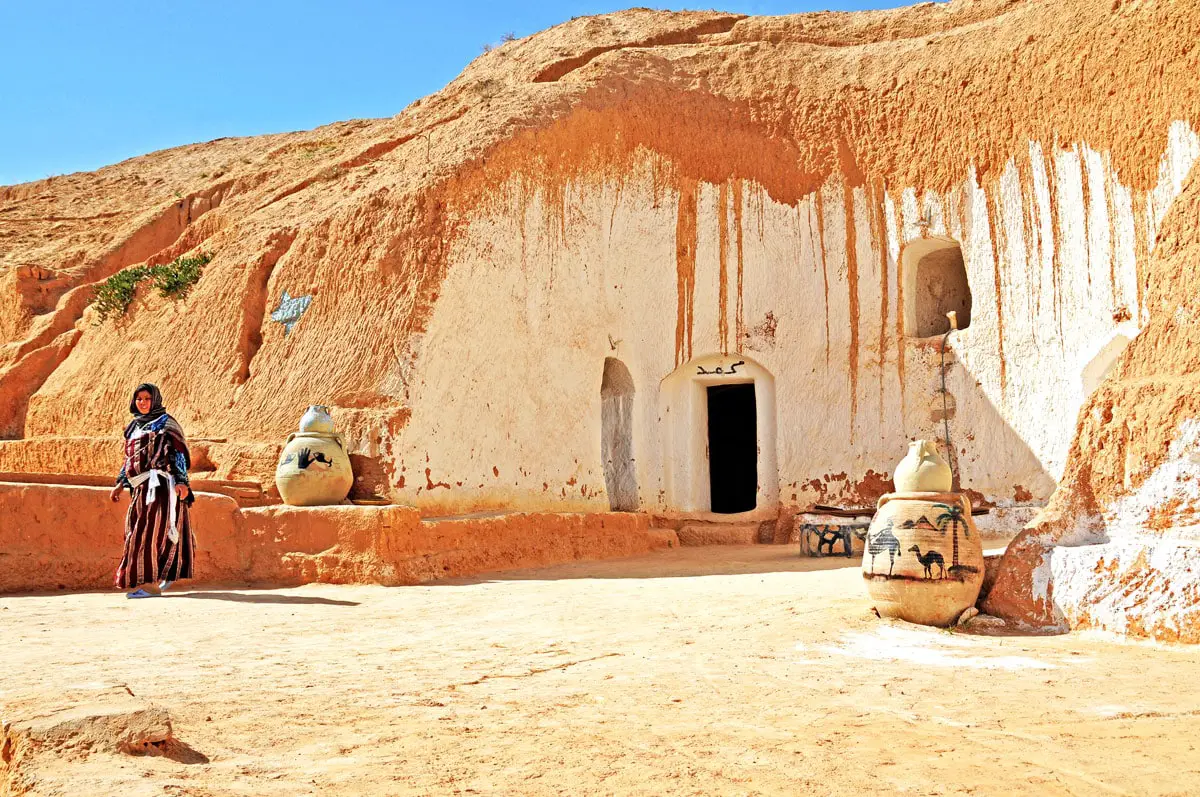
Kairouan
Kairouan
One of the holiest Islam cities. Kairouan was founded sometime in 670 AD. Has several very important buildings, including the Great Mosque of Uqba from the 9th century.
Mosque of Uqba (Great Mosque of Kairouan)
Kairouan
The oldest mosque in the Western Islamic world, built in 670 AD. An impressive building that resembles a fortress.
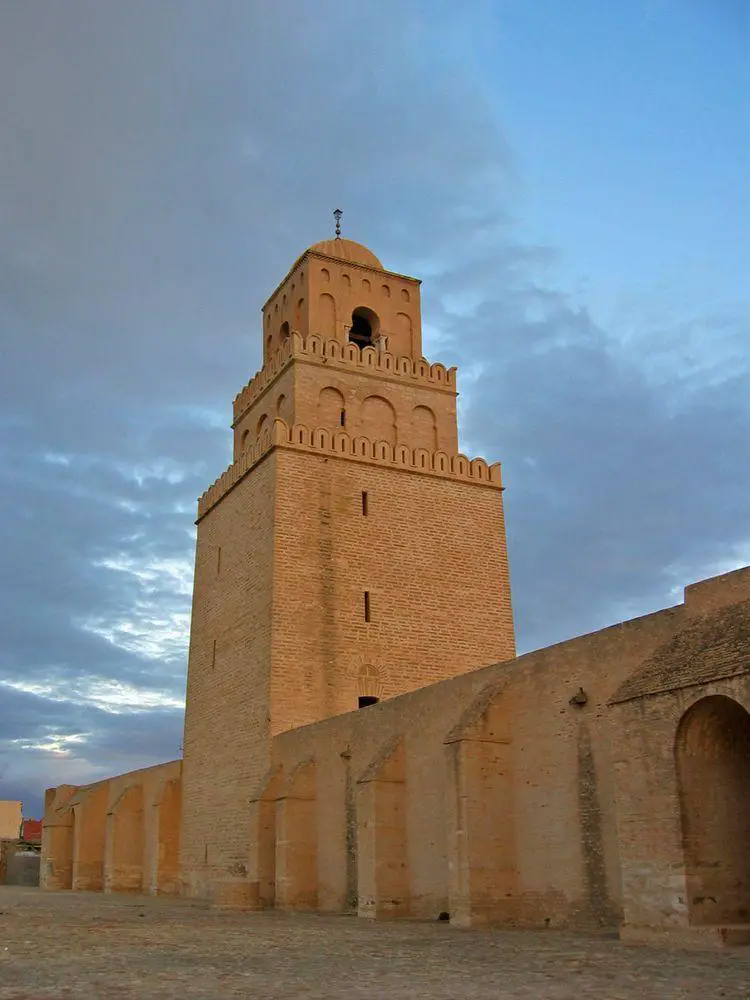
Medina of Tunis
Tunis
One of the best preserved Arab old cities. The whole medina (270 ha) is covered with a dense, seemingly chaotic network of buildings and streets. Here are located some 700 monuments of architecture and history.
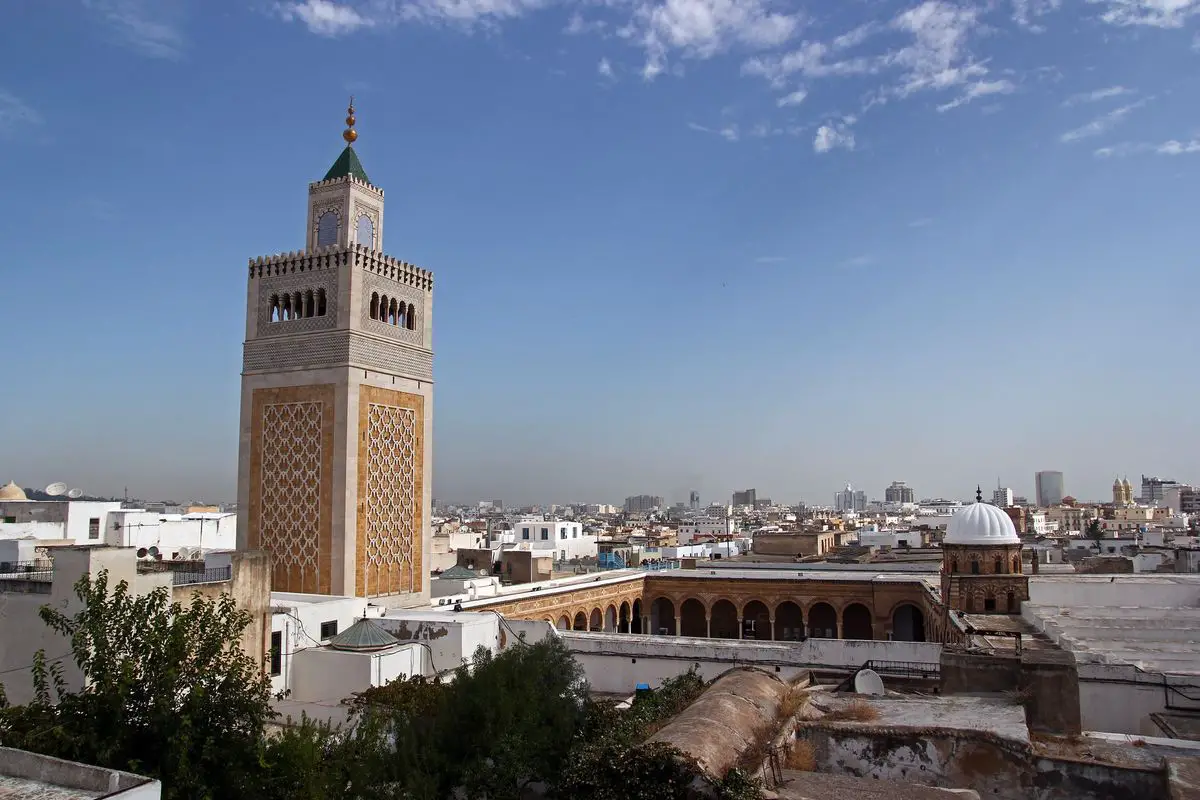
Al-Zaytuna Mosque (Zitouna Mosque) and Ez-Zitouna University
Tunis
An enormous mosque that hosts one of the oldest and best universities in the history of Islam. The first mosque here was built around 703 AD. University is founded in 737 AD and is considered to be the oldest teaching establishment in the Arab world.
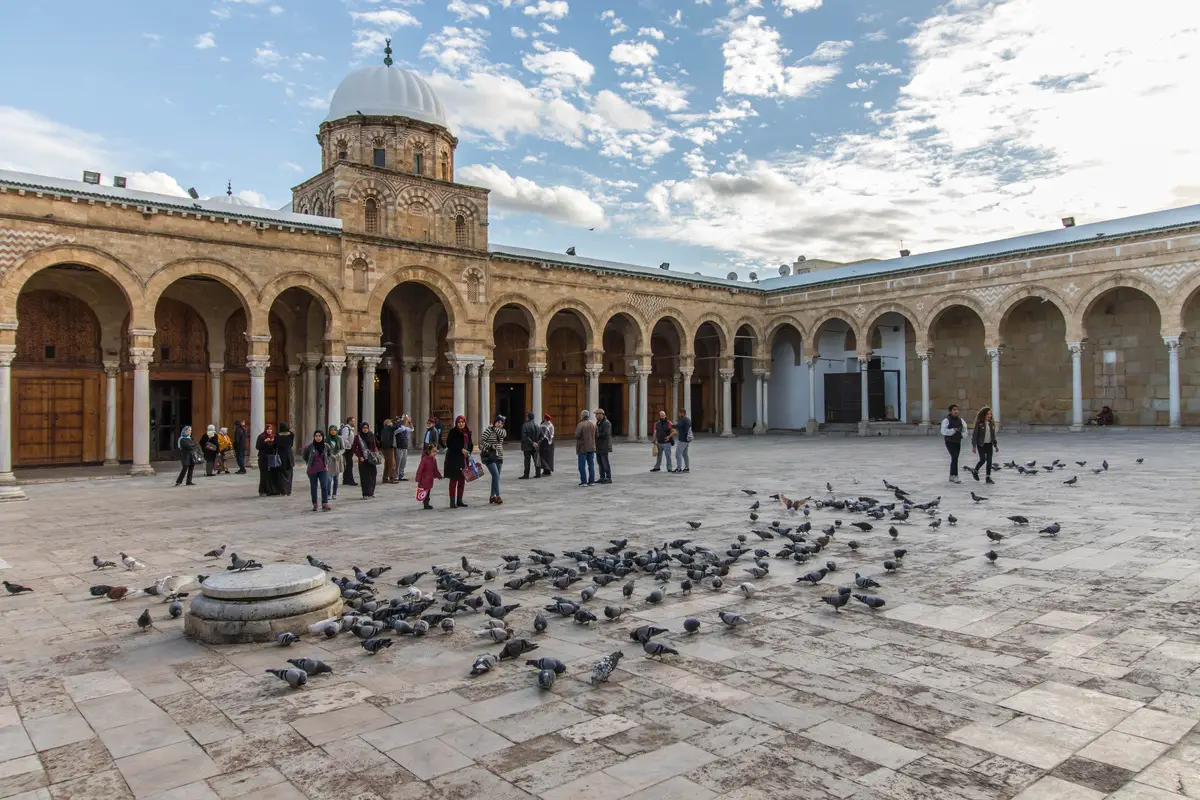
El Ghriba synagogue
Medenine
One of the oldest synagogues in the world. It houses the oldest Sefer Torah – a handwritten Torah.
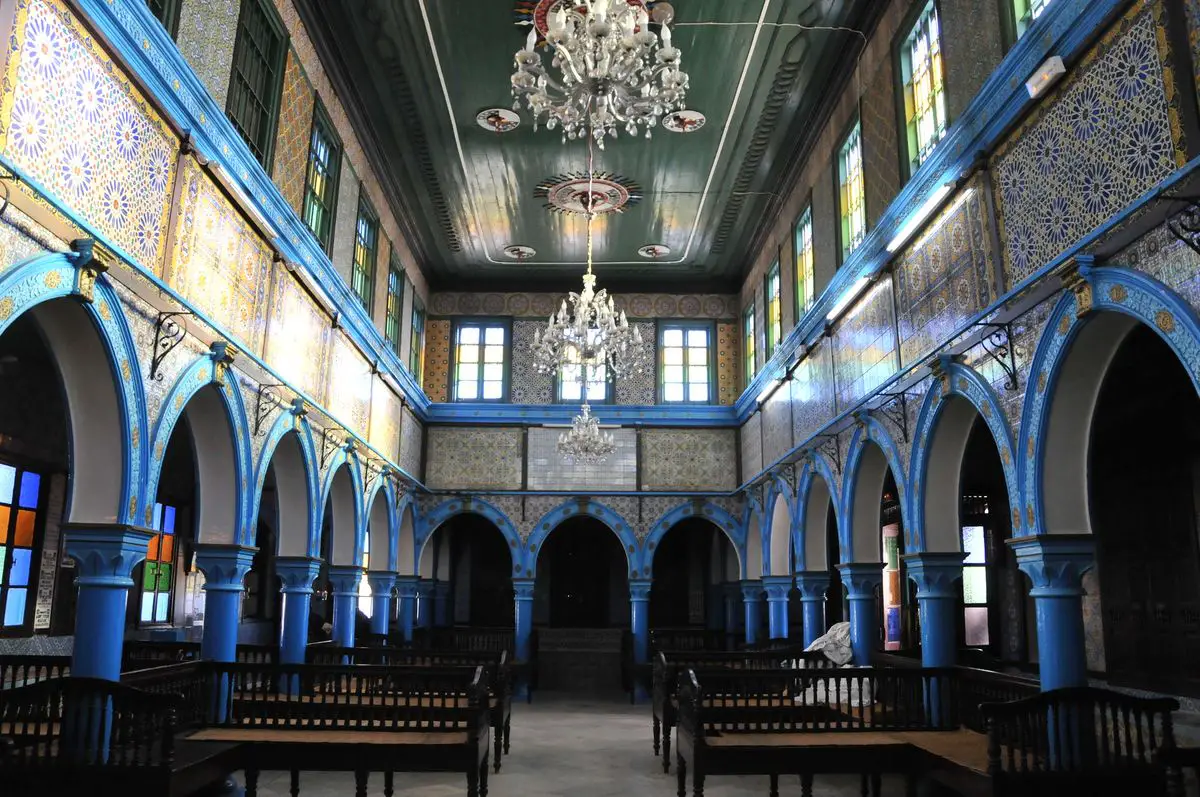
Ksar Ouled Soltane
Tataouine
Fortified granary, typical for Tunisia and Libya, constructed in the 15th – 19th century. Such communal Berber granaries were built in order to protect the food supplies from raids.
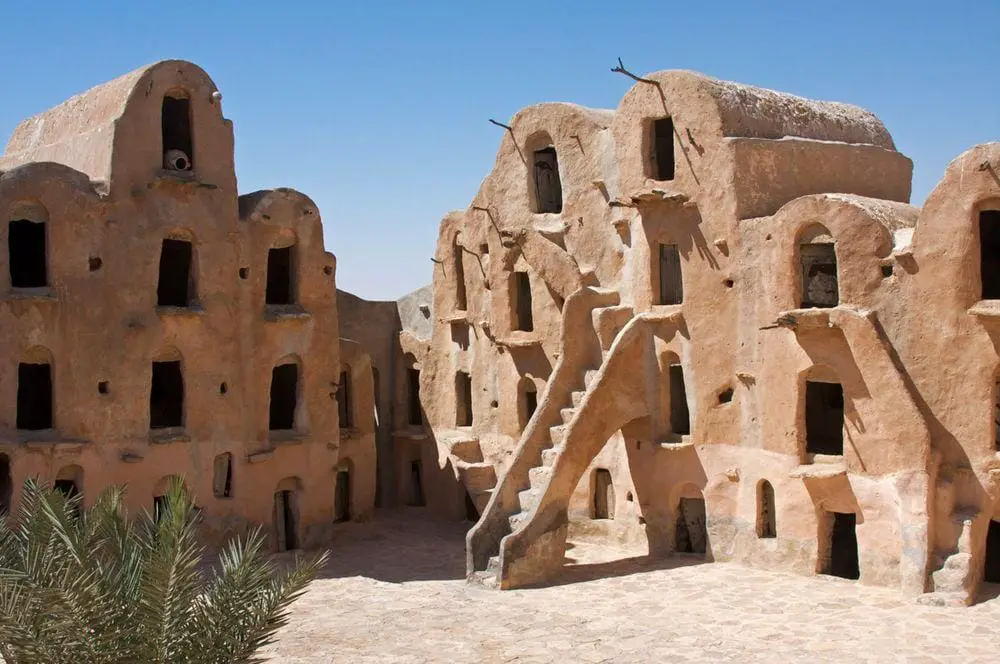
Medina of Sousse
Sousse
Well-preserved medieval city with magnificent fortification walls. Sousse has the characteristic architecture of white-washed houses with blue details. Interesting buildings are Ribat, the Great Mosque, Bu Ftata Mosque, and others.
Walled medina of Sfax
Sfax
An old city that is enclosed in massive, 2.75 km long fortification walls. These walls are 7 – 11 m tall and have two historical gates and 34 towers. The old city is 600 by 400 m large.
Medina of Tozeur
Tozeur
An old city with a specific style of traditional architecture – ornate brickwork.
 Recommended books
Recommended books
Tunisia – Culture Smart!
Culture Smart! provides essential information on attitudes, beliefs, and behavior in different countries, ensuring that you arrive at your destination aware of basic manners, common courtesies, and sensitive issues. These concise guides tell you what to expect, how to behave, and how to establish a rapport with your hosts. This inside knowledge will enable you to steer clear of embarrassing gaffes and mistakes, feel confident in unfamiliar situations, and develop trust, friendships, and successful business relationships.
The Rough Guide to Tunisia
The Rough Guide to Tunisia is the definitive guide to this Afro-Mediterranean destination. The full-color introduction covers the mile-long beaches of the distinctly European northern coast, as well as the fortified kasbah’s of the mountainous interior and the sub-Saharan oases. There are lively accounts of all the sights, from Roman remains and Islamic monuments to the ancient Medinas of Tunis, Sfax, and Sousse. You’ll find two full-color sections that highlight Tunisia’s striking architecture and varied wildlife, information on the best resorts, and exciting excursions into the mountains and desert.

